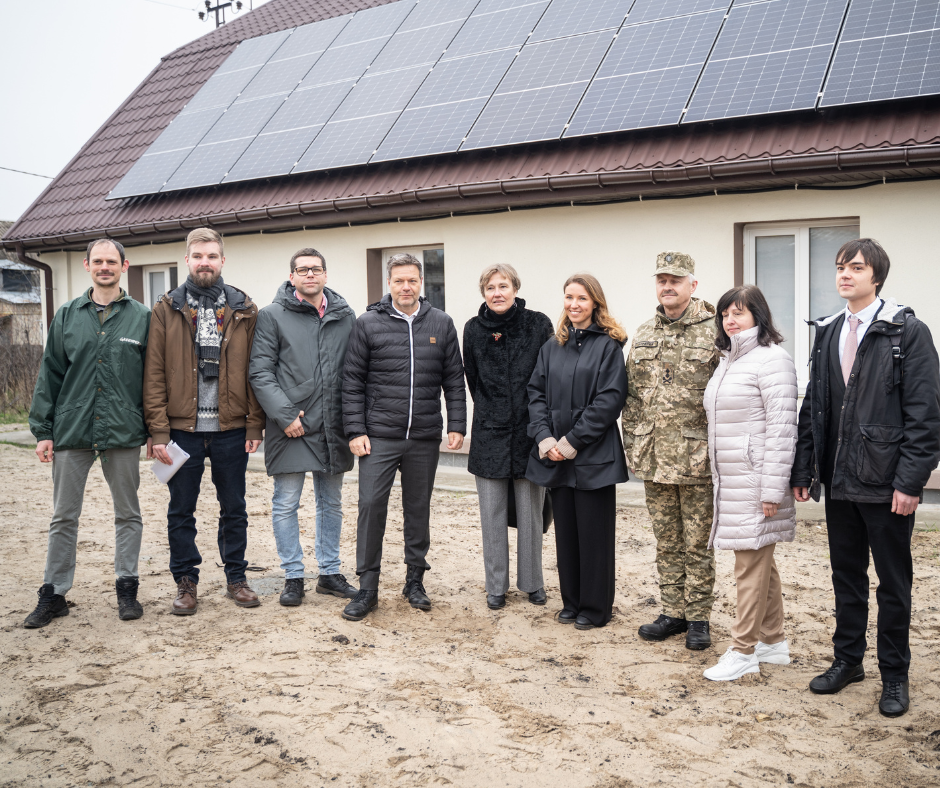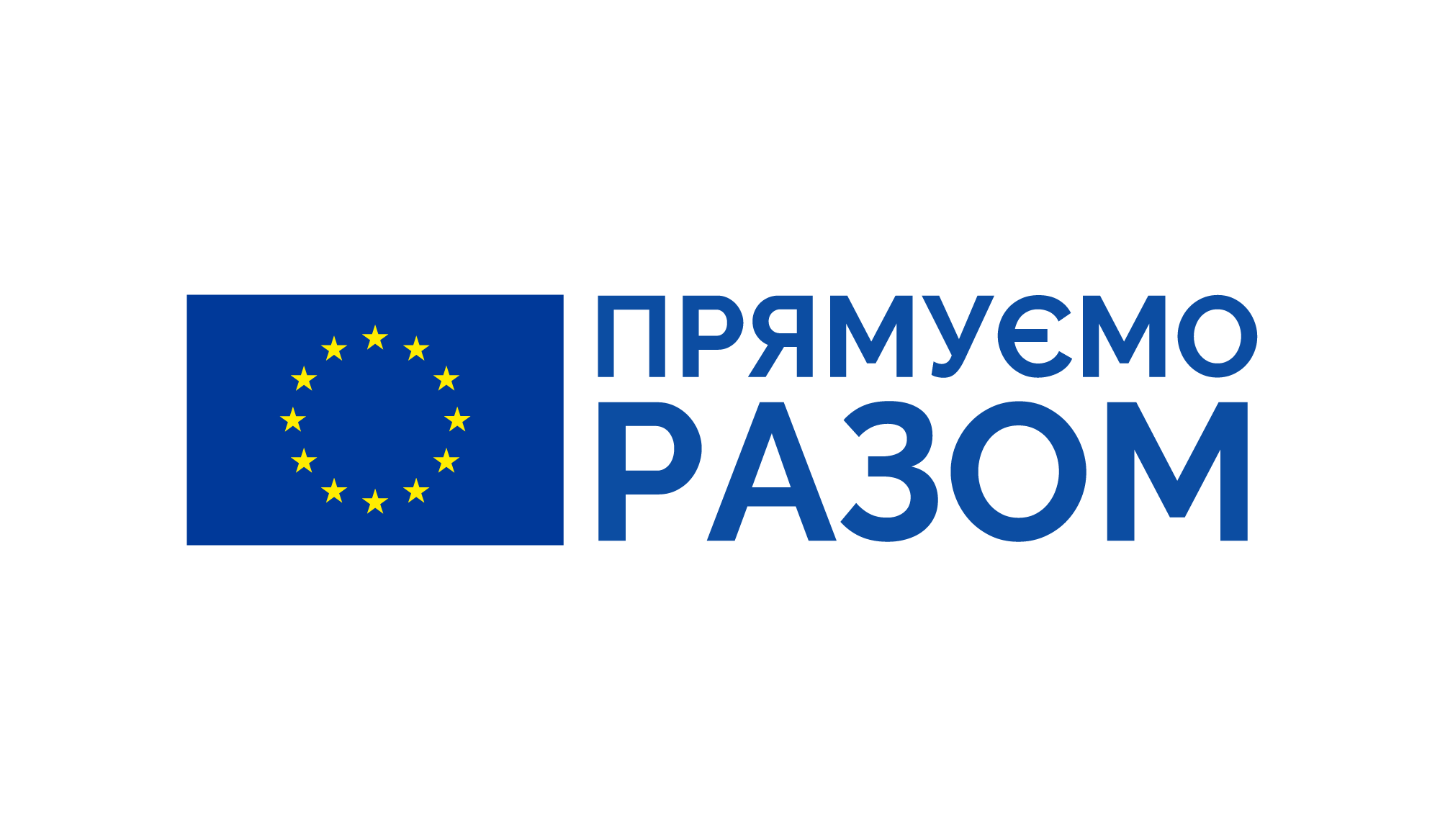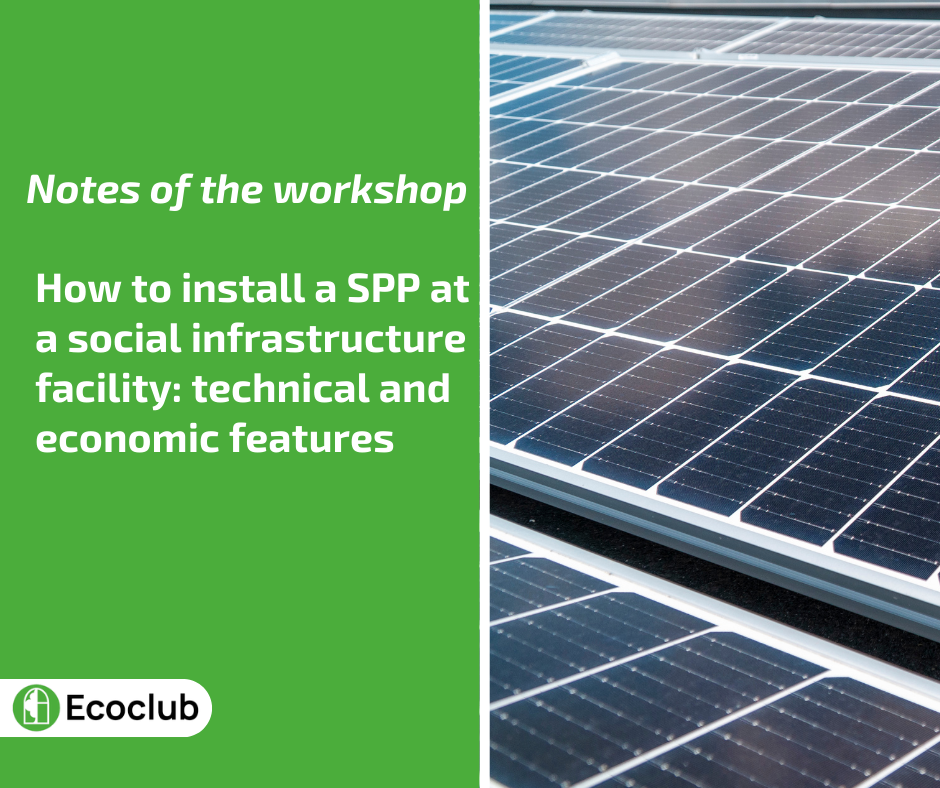Date: 18.09.2023
List of speakers:
– Andriy Herus – Chairman of The Committee on Energy, Housing and Utilities Services
– Farid Safarov, Deputy Minister of Energy
– Vitaliy Vlasiuk, Advisor to the Minister of Health
– Dmytro Sakalyuk, expert of the NGO Ecoclub
– Kateryna Zvirgzde, Government Relations Coordinator, WASH, International Organisation for Migration
– Ilya Dergunov, WASH Project Assistant at the International Organisation for Migration
– Yuliana Onishchuk, CO Energy Action for Ukraine Foundation
– Dmytro Kovalenko, member of the NEURC
– Stanislav Kazakov, Head of the Connection Department at DTEK Dnipro Power Grids
– Oleksii Mykhailenko, Clean Energy Lab expert
– Yevheniia Zahumennova-Krupovych, RES expert at IMPOWER
Introductory word. On the relevance of projects to provide social infrastructure facilities with electricity generating units.
Andriy Herus, Chairman of the Verkhovna Rada Committee on Energy, Housing and Utilities
– The aim of the workshop was to explain the possibilities for installing SPPs for critical infrastructure facilities such as hospitals, water utilities, schools, and district heating companies. How to correctly calculate the cost of the facilities – what is the payback period, where to get information for calculations, how to prepare a feasibility study for the facilities, what other documentation is needed.
– The dynamic trend of installing solar power plants began in Ukrainian hospitals in different regions of Ukraine last year. The goal of the Verkhovna Rada Committee on Energy, Housing and Utilities for the next year is to install 100 solar power plants in Ukrainian hospitals.
– According to the new draft law No. 9011-d, if a facility generates more electricity than it needs, the owners of the facilities will be able to sell the surplus to the grid under the net billing system.
– The russians are targeting Ukraine’s energy infrastructure, so distributed energy is essential. It won’t solve all the problems, but it will help the grid to reduce the load on it during the day. Renewable energy projects have a good payback period of 4-5 years on average, depending on the region and tariffs.
International support programmes. Farid Safarov, Deputy Minister of Energy
– Since the beginning of the war, the Ministry of Energy has organised a special line for receiving humanitarian aid for energy companies. Since then, we have received 10,000 tonnes from 30 countries in Europe, Asia and the US, including various equipment and fuel materials to restore the energy infrastructure.
The Ministry has been working on a special energy support fund. It involves the provision of grants from EU countries to a fund managed by the energy community. As part of the grant support, USAID purchases and transfers equipment to energy companies in accordance with applications from energy companies.
– The European Commission was approached by ENEL, an Italian solar panel manufacturer, which offered to provide 5,700 solar panels that could be used for energy needs.
– The centralised energy infrastructure has withstood massive shelling since the beginning of October last year. However, the sustainable functioning of the energy system requires the development of distributed generation.
– Communities have been using generators, but this is unprofitable for a permanent supply of electricity. Therefore, it is worth developing gas turbines, solar power plants or other types of renewable energy.
– The Ministry of Energy determines who will receive solar panels from ENEL. We are planning to cooperate with the Ministry of Health: we discussed the potential of the pilot project and the possibility of further installing SPPs for other hospitals. The Ministry of Health has identified hospitals that will potentially receive 5,700 panels.
– The Ministry of Energy is considering how to implement projects with panels from ENEL. It is necessary to provide for energy storage and accumulation systems to use the stored energy generated by SPPs during outages.
– UNDP agreed to carry out the design part of the work: they studied each facility and provided a technical description of the work required to install the SPP. ENEL provides only panels without fasteners and other equipment, so the Ministry is looking for a mechanism to compensate for other installation costs. This will be decided jointly with the UNDP and the Energy Community Fund. This week, the Ministry of Energy will receive a full technical description for all hospitals where SPPs will be installed.
– Japanese colleagues are ready to implement projects on a turnkey basis, provide equipment and materials to hospitals, and support other types of infrastructure. Donors are willing to finance green projects under the European Green Deal. Cooperation with them and other partners, NGOs that consolidate such projects, and direct communication between communities and regional administrations will allow them to receive such equipment free of charge.
– The Ministry primarily focuses on the restoration/maintenance of energy facilities. If the community agrees with a donor to transfer a complete set of equipment, the Ministry of Energy can help to formalise this as standard humanitarian aid and design a logistics route for the equipment delivery.
– A key aspect of the Ministry of Energy’s communication with donors is the focus on energy companies and heating networks that need distributed generation.
About the SPPs built at hospitals and water utilities in Ukraine
Dmytro Sakaliuk, expert of NGO Ecoclub
– Last year, the Rivne-based NGO Ecoclub launched the Solar Aid for Ukraine project. Its goal is to provide critical infrastructure facilities, such as hospitals and water utilities, with renewable electricity. During emergency or planned power outages, the facilities will operate regardless of the absence of power supply from the general grid.
Among the completed projects as of September 2023:
Zviahel, Zhytomyr region, city hospital.
The capacity of the SPP is 32.4 kW. The station is paired with a generator. It was commissioned on 29.12.2022. The turnkey cost is USD 25,490.
The funds were received as part of the Sustainability4Ukraine webathon from CSR.Europe, CSR.Ukraine and Dobro.UA and the NGO Ecoclub. If necessary, 170,000 people can be treated at the medical facility. Electricity generated as of 13.09.2023 – 25,866 kWh.
Dubno, Rivne region, city hospital.
The capacity of the on-grid SPP is 44 kW. It was commissioned on 26.06.2023. The turnkey cost is USD 42,080. Funds from the German Embassy, the city council and the NGO Ecoclub. The medical facility can treat 169,000 people if necessary. Electricity generated as of 13.09.2023 – 15351 kWh.
Zhytomyr, Zhytomyr region, city hospital.
The capacity of the on-grid SPP is 48 kW. It was commissioned on 04.07.2023. The turnkey cost is USD 36,393. The equipment was provided by SolSol, the city council and the NGO Ecoclub.
The facility can treat 118,000 people if needed. Electricity generated as of 09.09.2023 – 12138 kWh.
Sumy, Sumy region, city hospital.
The capacity of the on-grid SPP synchronised with the generator is 60 kW. It was put into operation on 05.07.2023. The turnkey cost is 50200 USD (documentation). Funds from the NGO Ecoclub and the city council. If necessary, 227,500 people can be treated in the medical facility. Electricity generated as of 09.09.2023 – 16,158 kWh.
Kremenchuk, Poltava region, city hospital.
The capacity of the on-grid SPP is 60 kW. It was commissioned on 05.09.2023. The turnkey cost is USD 43,180. Funds from the NGO Ecoclub and the city council. If necessary, 44,800 people can be treated in the medical facility. Electricity generated as of 13.09.2023 – 1469 kWh.
Ecoclub is a media partner of the project in Horenka, Kyiv Oblast.
In the winter of 2023, a heat pump (20 kW) and a solar power plant (12 kW) were installed there for a destroyed outpatient clinic. The project was implemented by Greenpeace Central and Eastern Europe, NGO Ecoaction and NGO Ecoclub. The cost was EUR 56,000. On 4 April, German Minister for Economic Affairs and Climate Protection Robert Habeck announced a new support programme – EUR 1 million for firm projects from the German Government – at a meeting with environmental NGOs at the restored outpatient clinic.

SPP is under construction:
– Water utility in Brody, Lviv region. The capacity of the SPP is 100 kW at the expense of the community.
– Water utility in Zviahel, Zhytomyr region. 150 kW of SPP capacity funded by the community.
– Regional dentistry in Rivne. The capacity of the solar power plant is 34 kW. Funded by the German Embassy, the community, and the NGO Ecoclub.
Also in 2023, the Ecoclub will complete the development of documentation/construction of the
– Nizhyn, Chernihiv region, maternity hospital.
– Brovary, Kyiv region, children’s hospital.
– Mykolaiv, children’s hospital.
– Zviahel, Zhytomyr region, kindergarten.
– Sumy, an object of the nature reserve fund.
Other plans for the construction of SPPs in 2024:
– The water utilities in Kamianka, Chyhyryn and Bohuslav received support from Skatek for a total of EUR 110 thousand.
For water utilities in war-affected communities on a competitive basis for a total of 260 thousand euros – support from Oxfam (currently, Ecoclub experts are developing feasibility studies for communities, based on which we will select facilities for cooperation).
The Ecoclub provides expert knowledge:
– Korosten, which won funds from the German organization GIZ following the development of preliminary feasibility studies.
– Vinnytsia, where they are developing design and estimate documentation for the construction of SPPs at three hospitals.
About the installation of SPPs at water utilities and social infrastructure facilities
Kateryna Zvirgzde, Government Relations Coordinator, WASH (Water, Sanitation and Hygiene)
– Over the past year, the International Organization for Migration (IOM) has assisted more than 200 water utilities in Ukraine, ranging from purchasing reagents to various types of equipment to creating joint projects for energy generation.
– Chornomorskvodokanal provides district heating to 85% of the city’s housing stock: about 20,000 subscribers and 23 budgetary institutions receive water and heat. The water utility has 2 operating clean water tanks with a total volume of 20,000 square metres.
– Over the past two years, the water supply company has re-equipped the water supply system and the central water supply system. The total cost of the projects is UAH 65 million.
– The city is currently developing an optimised water supply scheme for emergencies. As a result of the Russian attacks, the city’s power generation facilities and substations that supply Odesa region and the district were destroyed.
– Thanks to donor and budgetary funds, critical infrastructure facilities have generators that temporarily resolve the situation.
– To ensure the city’s energy security, Chornomorskvodokanal is installing a solar power plant with a capacity of 140 kW of electricity. Schemes for connecting the plant to existing power grids, determining its capacity, etc. have already been developed.
Ilya Dergunov, WASH project assistant
The purpose of installing the SPP for Chornomorskvodokanal is to provide electricity to the water treatment plant and 20,000 cubic metres of clean water tanks.
As part of this, two autonomous solar power plants of different capacities were installed:
– 52.65 kW panel power / 114.4 kWh battery capacity for a pumping station with a clean water tank. Under heavy loads, the station will help the water utility to operate continuously for eight hours, and under normal conditions – up to 2-3 days of water supply.
– 1.2 kW panel power / 5.2 kWh battery capacity for the water treatment plant (chlorination).
The generators are connected to the SPP and are controlled by the system automatically.
In the future, IOM plans to install diesel generators at all clean water tanks and the pumping station complex, and to complete the solar power plant, which already has diesel generators.
As of today, the water treatment plant is completely disconnected from the grid, and the station for clean water tanks helps to save up to 60% of electricity.
The next project is in the city of Mykolaiv. IOM is also providing equipment for the installation of solar power plants in hospitals: 17 sets of equipment have been delivered to the western and southern regions.
The 100 Solar Schools and 50 Solar Hospitals campaign
Yuliana Onishchuk, co-founder of the Energy Act for Ukraine Foundation
The charity’s goal is to install 100 SPPs for schools and 50 SPPs for hospitals in 5 years. Over the year, they implemented projects worth €450,000 and installed SPPs in
Chernihiv Regional Children’s Hospital. It is the leading children’s hospital in the region. At the time of the analysis, it had no generators. It survived the shelling. It was a shelter for more than 200 people in March 2022.
Details:
– Installed equipment: panels – Jinko; inverter and guard – ZSC Azzuro.
– The SPP feeds the neonatal intensive care unit. Number of patients: 67 beds (intensive care and surgery).
– Project implementation period: 4 months (February-May).
Irpin Academic Lyceum “Mriya”.
The station will cover 35% of the annual consumption and will power the first building, the bomb shelter, and computer classes.
Details:
– SPP with a capacity of 24 kW. Storage system – 49 kWh. Inverter – 20 kW (52 solar panels 385 W – Qcells).
– The inverter is SMA.
– The storage system is Hoppecke Batterien.
Ivankiv Central District Hospital.
The hospital survived 36 days of occupation, constant power outages and problems with generators.
Details:
– Installed equipment: panels – Jinko; inverter and guard – ZSC Azzuro.
– A 20 kW solar power plant powers the newborn intensive care unit
– Project implementation period: 4 months (February-May).
Chernihiv Lyceum No. 3, where 1,500 children study.
Details:
– Installed equipment: panels – Jinko; inverter and guard – ZSC Azzuro.
– The 20-kW solar power plant powers the classrooms for children in grades 1-6 (including computer labs) and illuminates the premises.
– Project implementation period: 4 months (June-September).
Forms and features of co-financing
Dmytro Sakaliuk, expert of the NGO Ecoclub
– Ecoclub uses 3 methods of co-financing: donor funds, own funds, and donations of equipment.
– Donor funds can go directly to Ecoсlub or the community. In this case, Ecoсlub evaluates and selects the contractor on a competitive basis, provides support for project implementation, and supervises the quality of work.
– The transfer of funds to community accounts is more difficult due to bureaucratic processes (budget legislation).
- Payment directly by the donor for the construction of the station: Ecoclub performs preparatory and supervisory work.
Own funds: Ecoclub provides support at all stages due to the lack of experience and knowledge, as this is usually the first experience of the community.
– If the equipment needs to be delivered to Ukraine, Ecoclub helps with logistics and documentary support. We hope for help with the transportation of equipment from the Ministry to speed up the process.
– It is important for the community to contribute to the project, for example, by preparing survey reports or design and estimate documentation, or even co-financing.
– The legal part of the work during the implementation of a SPP project is extremely important and can take much more time than the construction of the SPP itself.
Ecoclub has a well-established contractual and procedural framework and is ready to share it with everyone.
Where did the money come from?
– Small donations from people and businesses around the world – this source is drying up, there are fewer and fewer donations, and the amount of donations is decreasing.
– Oxfam, the European Climate Foundation, grant support from governments and the European Commission.
– Targeted donations from foreign companies are a large niche worth working with. They can see Ukraine as a large testbed for implementing advanced solutions.
– Own funds of communities – the possibility of reducing the ability of communities to finance themselves through the redistribution of PIT.
Why do some communities manage to build SPPs, while others do not?
– High-quality initial data. To get funding, you need to have calculations. The data must be detailed and accurate.
Co-financing is a sign of community interest.
– Willingness to work quickly – the urgency of project implementation. You need to be ready to respond quickly to partner requests. It will be an advantage to have an energy manager in the community who can quickly collect information.
– Responding to additional inquiries – readiness for daily contact and cooperation.
– Willingness to take responsibility, promote and defend decisions on the spot.
– Solving any issue “on the spot” on your own without the support of the Ecoclub.
How a solar power plant is born SPP: step by step
There are different approaches to the construction of SPPs, and EcoClub shares its own experience.
– Selection of the community and the facility. Ecoclub focuses on hospitals and water utilities. Political will and high-quality initial data, readiness for co-financing are important.
– Preparation of a preliminary feasibility study. This is the first assessment of the project’s feasibility in order to speak to the donor in the language of numbers and facts. We have already developed 30 preliminary feasibility studies and plan to develop more than 20 more by the end of the year. This is only an approximate calculation, in the case of construction, the calculations are refined.
– Inspection of the facility or preparation of a feasibility study. If there is a solid groundwork for financing, final technical solutions are developed, as well as the design specifications (the basis for the design specifications, the condition of the roof and the electrical network is assessed).
– Preparation of a roof/land survey report. At this stage, it is clear who will finance the solution. The act guarantees the performance of the work.
– Preparation of design and estimate documentation – guarantor of co-financing (signed financing agreement). Take into account the shortage of designers. The examination can take a maximum of 10 days. The average period of preparation is 6 weeks.
– There is a shortage of contractors in Ukraine. We recommend detailing the terms of reference for designers so that they do not make mistakes.
– Divide the project funding into the first/second start-up complexes. If the funding comes from the local budget or donor funds, everyone pays for their part of the work.
– Expertise. According to the Ecoclub’s experience, the examination takes up to three weeks on average. The fastest is 10 days. It takes up to six weeks to prepare the design and construction documents. The speed depends on the experience of the designers.
– Construction. Ecoclub helps to prepare and/or prepares tender documents, depending on who is holding the tender. Experience shows a complete lack of quality technical supervision: Every time Ecoclub engages specialists to control the quality of construction. A similar situation happened in Brody: the contractor violated the design decisions.
– A 100 kW rooftop station can be built in 10 days on average with the help of contractors with whom Ecoclub cooperates. Ecoclub helps to build mostly on-grid solar power plants. Solar power plants can be installed at any time of the year. The first solar power plant was built with the help of the Ecoclub in December last year.
– An information campaign. It is important to show how renewable energy sources can change people’s lives, especially in times of war. Together with the communities, Ecoclub talks about their involvement in the process. In times of war, we try not to give the exact addresses of medical facilities to avoid potential attacks. The more open the community is, the easier it is to raise funds and find partners for new projects. For example, Zvyagel is already planning/building four SPPs at other sites. By highlighting the results of the plant’s operation and the first savings, the community residents have requested the development of renewable energy sources – this is their safety in crisis situations.
– Problematic technical and organisational issues. Ecoclub faced the problem of getting distribution system operators to agree. In Zhytomyr, a simple connection scheme was not approved despite requests from the authorities and the contractor.
– Construction in sanitary zones. If you work with water utilities, especially near water intakes, there are restrictions on the approval of the construction and location of the plant.
– Lack of data. Often, the facilities for which SPPs are built do not have an hourly consumption schedule. This makes it impossible to calculate the required capacity of the solar power plant. If you are planning to build a SPP for a hospital, it is important to have a list of all the equipment of the medical facility and its consumption.
Peculiarities of working with contractors who build SPPs
Ecoclub has developed a procedure for selecting contractors:
– We compile a preliminary list of suitable contractors who meet the internally defined criteria.
Where to find contractors: recommendations, open sources (online exhibitions, etc.).
– We create the same technical task for a theoretical object.
– Identify a list of potential contractors.
What else should you pay attention to?
– Whether the contractor complies with safety regulations.
Determine in advance the issue of renting construction equipment at the construction site (often the contractor tries to shift this to the customer).
– Legal issues:
When you have selected a list of contractors, do a basic due diligence procedure – debts, nature of litigation, opendatabot.
The contractor will propose its own form of general contractor agreement.
– Pay attention to the payment procedure.
– The contractor shall provide a schedule with the stages of work.
– Timing: review the list of circumstances that extend the project’s duration.
– Warranties: must be specified in the contract (warranty for equipment and work).
– Fixing the exchange rate in the contract (if it has risen, revise it).
– Anti-corruption clause .
Project stages:
– Initiation stage – we define the project and develop a feasibility study.
– Implementation stage .
– Preparatory.
– Design stage and regulatory documents.
– Receipt and equipment.
– Construction.
– Project closure stage.
What to look for at the construction stage:
– Compliance of the feasibility study with the proposed solution and availability of licences for the contractor (licences by classes of consequences).
– Adherence to the work schedule (calendar plan or Gantt chart), identification of possible reasons for delays.
– Availability of a reserve fund of equipment.
– The issue of author’s supervision.
– Reporting and open systemic communication.
– Consideration of possible risks.
– Warranty and service issues.
A Gantt chart is a list of all project activities that follow each other. The chart shows the sequence or relationship between them. The contractor provides it before the start of the project.
Lessons learnt:
– Define the criteria and procedure for selecting contractors.
– Develop a detailed general contractor agreement.
– Get a project justification and timeline from the contractor.
– Learn all the stages of the project.
– Consider the possible risks.
Download the Dmytro`s presentation:
Presentation of the Ecoclub. Installation of SPP (836 downloads )Installation of SPPs in own power grids at a social infrastructure facility (NKREKP)
Dmytro Kovalenko, representative of the National Commission for State Regulation of Energy and Utilities
Legislation and regulations:
– Law of Ukraine “On the Electricity Market” Articles 58 and 58-1.
– Distribution Systems Code Chapter 4.12 of Section V.
Options for the operation of SPPs:
– Without the possibility of supplying electricity to the IPS of Ukraine or to the networks of other business entities (exclusively to cover own needs).
– With the possibility of supplying electricity to the IPS of Ukraine or to the networks of other business entities (Sale of surplus).
Permitted capacity of generating facilities with the ability to supply electricity. Pursuant to Article 58-1 of the Law of Ukraine “On the Electricity Market”, an active consumer and/or a consumer has the right to install generating facilities intended for the production of electricity:
– non-household consumers, including energy cooperatives, with a capacity of up to 150 kW for the purpose of selling at a “green” tariff, in accordance with Article 9-1 of the Law of Ukraine “On Alternative Energy Sources”;
– small non-household consumers with a capacity of up to 50 kW for the purpose of selling the generated but not consumed electricity through the mechanism of self-production, in accordance with Article 9-6 of the Law of Ukraine “On Alternative Energy Sources”;
– non-household consumers with a capacity not exceeding the permitted (contractual) capacity of such consumer’s electrical installations intended for the consumption of electricity for the purpose of selling the generated but not consumed electricity through the mechanism of self-production in accordance with Article 9-6 of the Law of Ukraine “On Alternative Energy Sources”.
Installation of a generating unit without the possibility of supplying electricity to the IPS of Ukraine or to the networks of other business entities (solely to cover own needs):
– There are no restrictions on the installed capacity of generating facilities.
– Fulfilment by the consumer of the technical requirement set out in the Code of Distribution Systems (clause 4.12.2 of Chapter 4.12): “installation of technical means (smart meter, generation limiting device, etc.) and/or appropriate adjustment of emergency automation to prevent power supply to the grid”.
Notification of the DSO of the installation of a generating facility by sending an application (Annex 11 to the Distribution Systems Code) (Declarative Principle).
– Amendment of the Distribution Point Passport by the DSO.
Installation of a generating unit with the ability to supply electricity to the IPS of Ukraine or to the networks of other business entities (Sale of surplus):
– The installed capacity of generating units (inverters) may not exceed the capacity permitted for consumption under the electricity distribution service agreement and the capacity permitted by the Law of Ukraine “On the Electricity Market”.
– Compliance by the consumer with the technical requirements set out in the Code of Distribution Systems (clause 4.12.2 of Chapter 4.12) to prevent deterioration of the regulatory parameters of electricity quality in the grid and security of supply by the consumer’s generating facilities.
Notification of the DSO about the installation of a generating facility by sending an Application (Annex 11 to the Distribution Systems Code) and a single-line diagram.
– Representatives of the DSO shall inspect the generating facility and make changes to the Distribution Point Passport.
Self-generation mechanism – limited output capacity of up to 50% of the capacity allowed for consumption. To increase the permitted capacity:
– If the capacity of generating facilities installed with the ability to supply electricity to the IPS of Ukraine or to the networks of other business entities exceeds the capacity permitted for consumption, it is necessary to increase the permitted capacity by obtaining a connection service.
– Currently, the connection service is provided in accordance with the Procedure for Temporary Connection of Electrical Installations to the Distribution System during the Period of Martial Law in Ukraine, approved by NEURC Resolution No. 352 dated 26.03.2022.
If a consumer wishes to supply electricity to the grid, the capacity allowed to the consumer (under the distribution agreement) must match the capacity consumed or planned to be installed in their own networks.
Practical implementation cases
Difficult questions: simply about the difficult, Dmytro Sakaliuk, expert of the NGO Ecoclub
How SPP changes the operating conditions of a facility:
– SPPs are an additional source of electricity for the end consumer, increasing the reliability of electricity supply.
– SPPs with batteries provide a certain autonomy (it is important to choose the right battery capacity and equipment power lines).
– SPPs generate electricity several times cheaper than diesel generators.
They require high initial investment.
Important limitations:
– Financial.
– Roof/land area.
– Graphs of energy consumption by the hospital.
– The goal to be achieved.
– Other (space, ventilation, staff, strategic vision, etc.).
Contractors and equipment. Lack of service providers for the development of documentation: pre-feasibility studies; feasibility studies; design and construction documents; building inspection reports.
Recommendations
Create incentives for municipalities:
– Documentation templates.
– Assistance from energy supply companies.
– Technical consultations.
– Create affordable loans in local currency or with risk insurance.
– Raise awareness and professionalism of municipal representatives.
– Provide professional technical supervision.
– Development of the design sector.
A practical case study: Zhytomyr. Installation of a solar power plant with a capacity of 48/36 kW (DC/AC) in the therapeutic building of the Municipal Enterprise “Hospital No. 1” of the Zhytomyr City Council
Borys Pakholyuk, Director of the City Development Agency of the Zhytomyr City Council
Zhytomyr has been a signatory to the Covenant of Mayors initiative since 2012. In 2018, it became the first city in Eastern Europe to sign a political declaration on the complete rejection of fossil fuels.
– The therapeutic building was built in 1984.
– Thermally modernised in 2017-2019 (ESP, community budget): -44%.
– July 2022 – a competition from the NGO EcoClub (funding for SPPs).
Online calculator (estimated data): August 6298 kWh, year 50430 kWh. Generated in August 5927 kWh (94, 1 %), 47456 kWh expected generation for the year. Expected generation over 25 years is 996212 kWh (taking into account the decrease in panel performance over 25 years to 83.1% of the rated capacity).
According to preliminary calculations, the SPP will cover approximately 20% of the annual electricity demand of the therapeutic building (or approximately 5% of the electricity consumption of thirteen inpatient buildings). The payback period is about 4 years.
The main problematic issues:
– Development of the project design (contractors).
– EDESB .
– Interaction with regional power distribution companies.
Experience of installing a solar power plant for the Kyiv Central City Hospital
– The medical facility has 300 beds and employs more than 1000 medical staff. The hospital survived the occupation, so autonomy and energy independence were priorities during the recovery.
– The average electricity consumption of a medical facility is 400 kW. Therefore, the purpose of the SPP construction was to unload the grid and reduce consumption.
– The hybrid solar power plant was installed for the infectious diseases department. Its capacity is 24 kW. We received it thanks to the Croatian Embassy in Ukraine. The SPP also has three 19.5 kW inverters and 48 kW batteries. The batteries allow for continuous operation of the infectious diseases department for eight hours.
– Thanks to the operation of the SPP, the hospital saves up to UAH 250 thousand on electricity supply services.
– The medical facility also has generators. They allow the station to be powered in case the batteries are discharged. The facility has a system for monitoring electricity generation/consumption.
– Another 24 kW PV system was installed for a children’s clinic. It was provided by a charitable foundation, so the installation time was 2 weeks. If the medical institution had installed the solar power plant on its own, the estimated time for the funds to be used would have been 4 months.
Experience of installing a solar power plant for the Gostomel Primary Healthcare Centre
– The solar power plant, which works in conjunction with a heat pump, provides the outpatient clinic with electricity even during scheduled or emergency outages. The outpatient clinic has been operating autonomously since mid-May.
– The total capacity of the solar power plant is 12 kW (28 solar panels in total). In addition, a battery was installed to store excess electricity. Its capacity is 8 kW.
– The capacity of a groundwater heat pump is 20 kW. Among all types, the groundwater system is the most economical to use.
– The total savings due to renewable energy sources for the year amounted to 30% on utility bills.
– Another project is a 25 kW mobile solar power plant that fully covers the needs of the mono-outpatient clinic. In summer, it operates completely autonomously.
Features of SPP maintenance
Yuliana Onishchuk, Energy Action for Ukraine
– Any solar power plant requires mandatory system maintenance throughout the entire lifetime of the solar station (up to 25 years).
– Such expenses are the responsibility of the community or a separate facility.
– Failure to maintain the plant in a timely manner may result in an emergency situation and non-warranty malfunctions of the plant. The Contractor will not pay for the repair of non-warranty cases.
– The productivity and efficiency of a solar power plant depends on timely maintenance.
The maintenance of a solar power plant for a social infrastructure facility has the following components:
– Construction support, training and drafting of a staff handbook.
– Constant system monitoring of the station’s operation.
– Scheduled maintenance.
– Clean the panels.
Construction, training and monument:
– Identify a responsible technician.
The specialist supports the process of auditing the facility and construction.
– Agree on the wiring diagram and the configuration and functions of the equipment.
– Provide training in basic problem solving, review and monitoring.
– Identify a contact person to handle emergencies.
– Create a memo with an inspection and maintenance calendar.
What the minimum scheduled maintenance consists of:
– Contractor visits to the site at least once a year.
– Detailed analysis of monitoring system data and errors before departure (for the whole year)
When checking out:
– inspection of the station, equipment, connections, terminals, cables, insulation;
– checking the fasteners;
– measurement of ground resistance;
– checking the currents – input, output, battery charge, and mains;
– software updates as needed;
– testing the operation of automation, alarm and communication devices;
– cleaning the panels as necessary.
Can I do the maintenance myself? It is possible, but only if you have a licence for electrical work and undergo special training in working with certain types of equipment.
Monitoring of stations. Monitoring is carried out by the customer and/or the contractor. You can carry out the monitoring yourself, but the contractor performs detailed analytics with monthly reporting. The monitoring system is connected in order to quickly identify and resolve problems that may reduce the performance of the station.
Such monitoring reports and handles alarms at the station in real time. Monitoring is usually accessible via any internet browser by anyone with access.
The responsible person on the customer’s side must understand how to use the monitoring and carry it out on an ongoing basis.
Daily monitoring and reporting by the contractor is provided under the terms of the service agreement.
Cleaning the panels:
– Wash every 4 years.
– Monitoring and review will show the level of efficiency loss.
– The panels are well self-cleaning after winter.
– The panels are usually not cleaned in winter.
– Cleaning by yourself is theoretically possible (only in accordance with the recommendation of the panel manufacturer and compliance with safety regulations).
– If it is necessary to clean the panels, this should be done by professionals.
Guarantees:
– 1-2 years for the work to be carried out.
– 10-25 years for solar panels.
– 5-10 years for an inverter.
– 5-10 years for energy storage systems.
Record the terms of equipment replacement in warranty cases.
– Check with the contractor to see if they have a replacement stock of equipment. Otherwise, you will have to send the equipment back to the manufacturer, which can take a very long time.
– Purchase +3-5 spare panels.
– It is better to buy equipment through your contractor, as they are usually the manufacturer’s representative and therefore have a warranty.
– If an out-of-warranty event occurs (lightning strikes), the customer bears the financial costs.
– Scheduled maintenance reduces the risk of non-warranty events.
The economic effect of the generating plant and additional preferences
Oleksii Mykhailenko, CLEAN ENERGY LAB expert. What to do with the surplus, how to calculate the payback of the project.
Data that needs to be prepared for the future active consumer.
▪ Hourly consumption schedule for a full calendar year.
▪ If there is no hourly profile, the profile is built manually from monthly data and subsequent data:
▪ Maximum connection capacity.
▪ List of main appliances and their capacities.
▪ The nature of equipment operation, work shifts, and lunch breaks.
▪ Taking into account seasonal changes (air conditioning, heating, holidays, etc.).
▪ Geographical coordinates and available areas for the installation of the PV system (drawings are ideal).
▪ Roof parameters (orientation, material, pitch).
▪ Land for ground-mounted SPPs (usually more expensive, more shadowing risks).
▪ Consumption vs. generation schedule of SPPs.
Factors to consider:
– The final price of electricity will change over time. For greater project accuracy, it is worth contacting experts to model the long-term price.
– The maximum capacity of the SPP must meet the condition of limiting the supply of surplus power to 50% of the connection capacity.
– Tax effect of SPPs. Reducing electricity costs means increasing profit for tax purposes. SPP on the balance sheet means depreciation and a reduction in taxable profit.
What and what capacity to install? An active consumer can significantly reduce their electricity costs with their own SPP
– The “benefit” for self-consumption will be long-lasting. The final price of electricity is unlikely to decrease in the future, and is likely to continue to increase under the current regulatory environment and resulting energy mix.
– Installing SPPs solely to sell surplus energy is impractical. The active consumption tool is used for consumers’ own access to cheaper renewable energy.
– Increasing the capacity of SPPs on the consumer side will reduce the total consumption in the system during daytime hours, which will lead to a drop in prices for the SPP profile.
Strategies in line with goals:
– To maximise the return on investment, a smaller SPP capacity is required to minimise surpluses.
– Maximising electricity cost savings – higher capacity of SPPs, avoiding grid constraints.
– Providing backup power – deploying a “microgrid” with a mix of technologies according to the duration of potential outages.
– The economic feasibility is not based on market prices, but on the intrinsic value of “lost” energy.
– The Green Transformation Law was adopted in June and came into force on 27 July 2023, so most of the regulations for its implementation are still under development.
– The Law introduces a new system of support for renewable energy sources based on the self-production mechanism. The state guarantees the purchase of electricity from active consumers produced at their own facilities under a simplified procedure.
According to the law, active consumers include any consumers who:
– Consume electricity.
– They produce energy at their own facilities.
– They store and sell the surplus to the network.
– Participate in energy efficiency and demand management activities.
– The production of electricity by active consumers for their own consumption is not a professional activity, provided that the generating facilities do not exceed 5 mW. This is the threshold above which the activity is considered professional and requires a licence.
– The law establishes certain restrictions on the capacity of installations for certain categories of consumers – small non-domestic consumers – with a capacity limit of 50 kW.
– The total capacity of generating facilities cannot exceed the installed capacity of consumption facilities.
– Support for active consumers is provided on the basis of a self-generation purchase and sale agreement concluded between the active consumer and the electricity supplier or universal service provider, depending on the type of consumer.
– The sale and purchase agreement is a model agreement. The form of the model agreement must be approved by the regulator. It is an annex to the electricity supply agreement with the consumer. The procedure for entering into a sale and purchase agreement under the self-production mechanism will be determined by the retail market rules. No amendments to these rules have yet been approved.
– Small household consumers (with a connected capacity of up to 50 kW) will be able to choose to sell to either a universal service provider or a regular electricity supplier.
– Consumers with a connected capacity of more than 50 kW will enter into a self-generation agreement with the electricity supplier at a price that will be the result of an agreement between the parties in the agreement.
The article was published within the framework of the project “Closing the Loop: A Just Energy Transition Designed by Cities and Regions” by the European Commission. The contents of this publication are the sole responsibility of NGO Ecoclub and do not necessarily reflect the views of the European Union.












